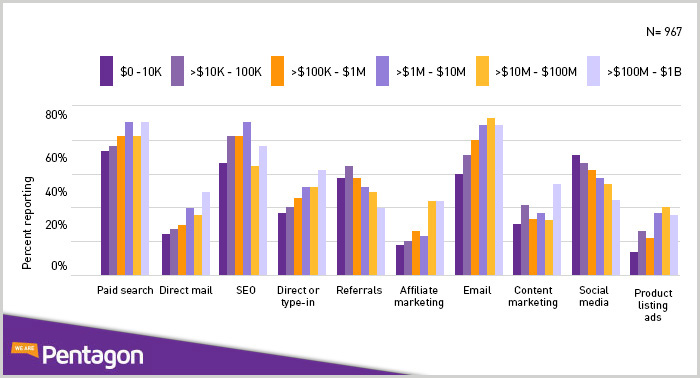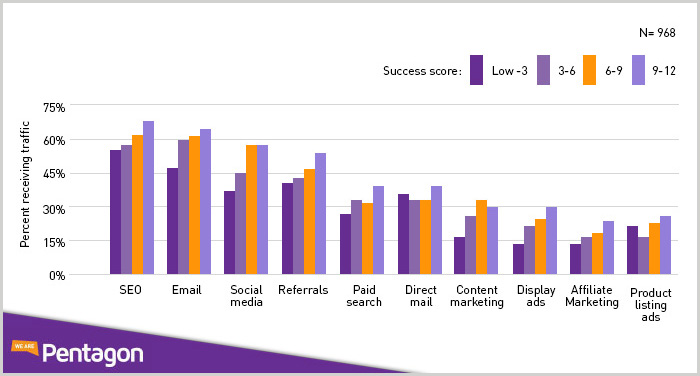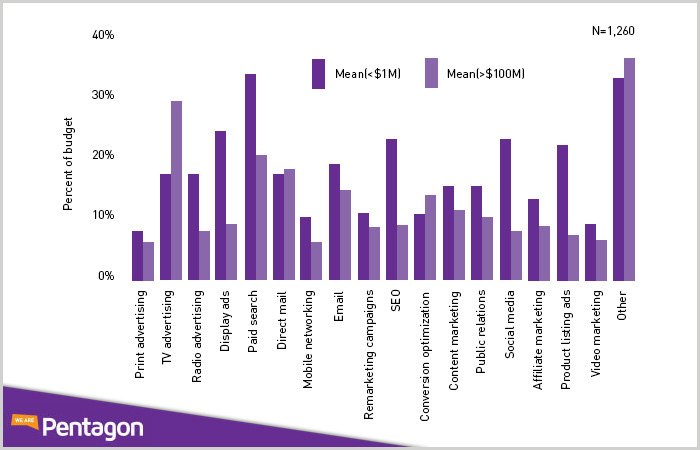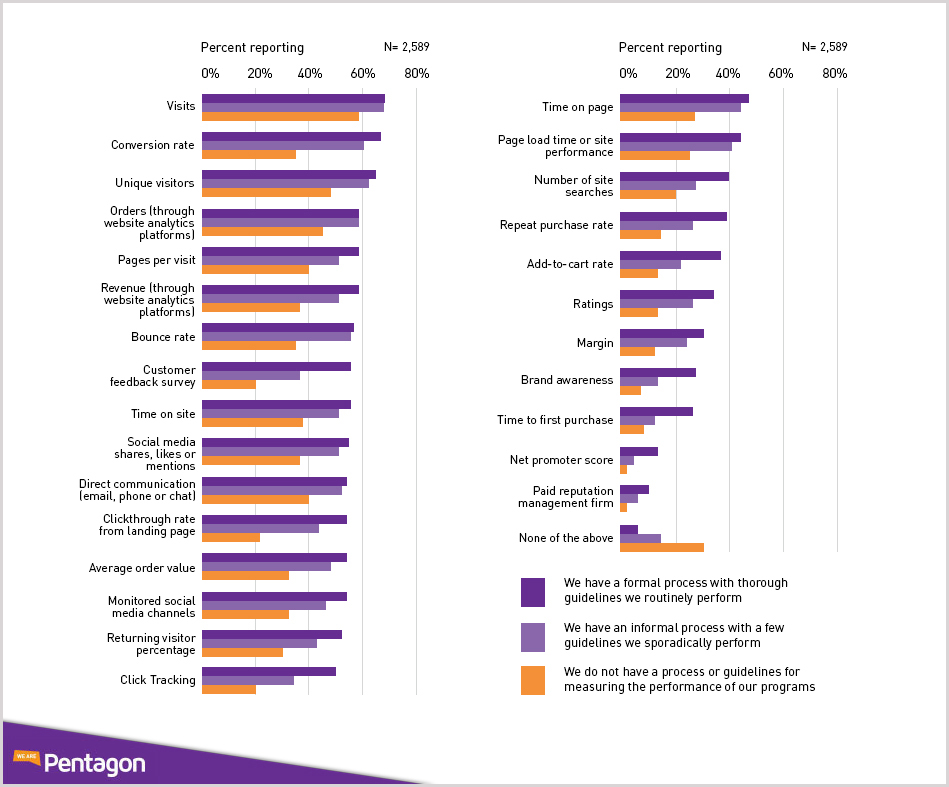
Budgeting is never an obvious process: it is quite the balancing act. Spending too little can just lead to no results (potentially wasting company money), and spending too much will leave you cursing your lack of return on investment (ROI).
To secure the right budget for your ecommerce strategy, you need data, intuition and experience. We can provide you with the first.
When it comes to ecommerce marketing budgets, there is no “one size fits all” solution; especially when every product and every market is different. So, the best place to start is by analysing your own data to understand how it aligns to specific company or channel goals.
Start with simple questions:
As an example, if you want a better ROI you should shift some budget from Pay Per Click (PPC) to Search Engine Optimisation (SEO). In the same way, if you are looking to increase sales in the next quarter, invest in paid media advertising in order to generate more immediate sales.
Remember that not all channels are created equal. There are specific goals that are better suited to particular channels. For example, if you want to increase ‘millennial’ purchases of your latest fashion item, it might be worth investing in sponsored Instagram posts; or if you want to improve customer retention, then you might want to focus your budget on instantaneous customer care through chatbots, and so on…

[Channels that drive significant traffic (by revenue) – source: Ecommerce Benchmark study by Marketing Sherpa, 2016]

[Which channels do ecommerce companies receive traffic from? (by success score) – source: Ecommerce Benchmark study by Marketing Sherpa, 2016]
Over 4,000 ecommerce merchants, including Internet Retailing’s Top 500 (IR500), took part in a survey by Magento, eBay and Marketing Sherpa, on where their ecommerce marketing budget is allocated. Let’s have a look.
Interestingly, ecommerce brands are spending between 10% and 24% of their budget on SEO. The average ecommerce marketing budget is dependent on company revenue, so the research has been organised into investment levels by mean revenue: less than USA$1million and more than USA$100 million.
Low revenue companies, with an average turnover of USA$1million, spend more than double the percentage of their budget on SEO (24%) and paid search (38%), when compared to larger income turnover organisations who spend 10% of their budget on SEO. It is reasonable to assume that companies with large revenues have been in the market far longer than “smaller” companies, so newer companies understand that they need to put more effort into SEO to help launch their brand awareness in markets.
In comparison, long-established companies with a more stable brand reputation, are likely to have previously invested heavily in SEO, building their authority at the beginning of their ecommerce journey.

[How much of the marketing budget is spent on each channel (by overall revenue) – source: Ecommerce Benchmark study by Marketing Sherpa, 2016]
High revenue companies can afford to pay for TV advertising. Indeed, they are spending up to 30% of their ecommerce marketing budget on dear old TV, while low-revenue companies are investing less than 20%. While “new-era” companies, of electronic commerce, still see the benefits of TV as a marketing channel, print advertising has almost become a forgotten past time.

[Which metrics do companies monitor regularly (by measurement strategy) – source: Ecommerce Benchmark study by Marketing Sherpa, 2016]
Tracking your data can help inform where to invest your all-important marketing budget efficiently. Looking at the graph above, it’s clear that the two tracking data, which differentiate highly structured companies from those less well organised are, ‘customer feedback surveys’ and ‘click-through rate from landing pages’. This data tells us that while conversion rate is the most vital indicator in ecommerce, it is dependent to a degree on the business model and quality of the site traffic.
However, looking at the data, email marketing, social media and organic search are still the most valuable tools to drive traffic to your ecommerce site, and remain key areas to invest your ecommerce marketing budget.

Let us develop a tailored solution for your business that will help you reach new international customers and grow your global sales.
get in touch